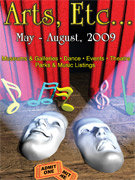Hope in the aftermath of genocide:
Reflections on Rwanda
Students standing in front of the mural they helped to paint.
As we bumped and rattled along on an unpaved road full of giant potholes, I strained my neck for a first glimpse of Rwanda. Much to my dismay, the headlights from our bus shed the only light for miles and I would have to wait until the following morning for a first impression of the “country of a thousand hills.” Regardless, after two long days of travel, our group of 18 Tufts University students had finally arrived in Africa.
Our group was selected for a ten day service trip to Rwanda where we would volunteer and spend time with orphans of the genocide. This past April, the citizens of Rwanda commemorated and remembered their family members lost in the 1994 genocide. In just 100 days, close to one million people were murdered in a country of just 9 million. Extremists from the majority Hutu ethnic group instilled fear in every citizen – the Tutsis feared a torturous death by machete and the moderate Hutus feared the consequences of refusing to kill their Tutsi neighbors. Using popular media, the Hutu Power extremists rallied the entire country – man, woman, and child – to kill. As the Western world turned a blind eye to the slaughter in this beautiful country, 1.2 million children were orphaned.
Upon hearing about the state of Rwanda’s orphans, a dedicated philanthropist, Anne Heymen, decided she would help. She researched Israel’s reaction to helping the youth survivors of the Holocaust and discovered the concept of a youth village. Modeled after Israel’s Yemin Orde village, the Agahozo Shalom Youth Village (ASYV) was built. At full capacity, ASYV will house 500 orphans of high school age and provide them with a great education, a place to call home, and an outlet for healing and reconciliation.

Kira amidst local village children during their recess.
In Kinyarwanda, the language of Rwanda, agahozo means “to dry tears” and in Hebrew, shalom means “peace.” The village is a place for the orphans to dry their tears and begin to heal. This peaceful environment inspires hope in this promising group of kids. Their drive and motivation is astounding – they realize just how lucky they are to live in a state of the art facility, eat three meals a day, and have a place to call “home.” Most of them aspire to attend university in Rwanda and some even hope to study in America.
On any given day, a visitor will find kids surfing the web in the Learning Center, playing basketball, soccer or volleyball, learning traditional African dance, playing guitar, and painting a mural. On Saturdays, the children work on the village farm, helping to cultivate the land that will eventually lead the village to a path of self-sustainability. On Sundays, most of them attend church and spend the day relaxing with their peers. Yet even these typical activities do not mask their haunted pasts. One young man shared two songs that he wrote in French and Kinyarwanda before coming to the village. They reflect on the immense sadness he feels every day, the irreparable hole in his heart, and his desire to find love.
In order to restore a sense of family in their lives, the youth live in houses, or ‘families’ of sixteen – each with a house mother and a counselor. Every night, each house has ‘family time’ where they share anything and everything. Achieving this close knit community was not easy – the kids were very quiet and introverted at first, unwilling to open up and speak about their emotions. Now, they call each other ‘brother’ and ‘sister’ without hesitation. The house mothers, who lost many of their own children in the genocide, never thought they would be called “mother” again.
ASYV is not an instrument of mass aid. Instead, the goal is to create a ripple effect of change. The village employs many locals, shares their recycled water with the local community, and invites others to use their sporting facilities. It serves as a model of community service for its students, inspiring them to give back and improve their surrounding villages. The student body is drawn equally from Rwanda’s 30 districts and with each graduating class the village hopes to send leaders back to develop their local communities. Although the village has electricity, running water, and wireless internet, housing for the rest of the kids is not yet complete, and the health center has a nurse but no doctor. The leadership of the village has many more dreams – a bus to take field trips, cows to make milk and cheese (another step toward self-sustainability), and scholarships for graduates to receive higher education.
Part of our group standing in front of finished mosaic that was created to cover the top of a stone bench outside of the school.
As I met survivors of all ages and walked through several memorials for the genocide, I struggled to comprehend the inhumanity witnessed here just fifteen years ago. Every single person walking down the street is either a survivor or a perpetrator. Not a single person in Rwanda was unaffected by the genocide. Yet I marvel at Rwandans’ ability to move on, to bear witness in the Gacaca courts (a system of community justice), to live next door to those who murdered their parents, to coexist in peace for the greater good of the country.
Standing on top of the tallest hill in the village overlooking a breathtaking view of green pastures and a distant lake, I reflected on the human responsibility during and after genocide. While hundreds of thousands of Rwandans fell victim to torturous deaths by machete, the Western world simply turned a blind eye. The genocide was far from secret to world leaders. In fact, the amount of UN soldiers used for evacuation of diplomats and foreign nationals would have been enough to stop the genocide all together. Yet the violence continued until the country was literally red with blood.
Although the smell of blood is no longer in the air, Rwanda has a long road ahead. We may not have done much to stop the genocide, but we have tremendous power to positively affect the aftermath of such an incomprehensible atrocity. ASYV is a glimmer of hope and an instrument for success in repairing not only a country destroyed by genocide, but also individual souls – orphans that had no control over their past, but have a strong hold on their future.
For more information or to help meet our group’s fundraising goal of $18,000, please visit www.asyv.org. If you choose to contribute, please make a note about Tufts University so that your money goes toward our efforts and the needs of the village.
Please feel free to contact me with any questions about the trip, this article, or the village at kira.mikityanskaya@gmail.com.
![]()
June 23, 2009
Volume 18, No. 25
front page
arts
schools
sports
editorial
'round town
people
events
obituaries







